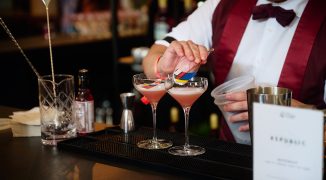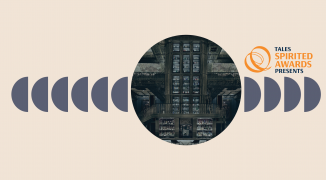One-hundred-fifty years ago in San Francisco, you’d be hard-pressed to find a bar that didn’t serve pisco punch. For decades, the blend of pisco, pineapple, citrus, and sugar was the hallmark cocktail of the West Coast. But Prohibition, followed by political unrest in Peru, diminished the country’s native spirit and it disappeared from American bars. Now, a new band of distilleries has planted roots, reviving the region and expanding pisco’s reach to the far corners of the globe.
Like cognac and Armagnac, pisco is a brandy made by distilling fermented grape juice in copper pot stills. No water is ever added to adjust alcohol content—a rarity in the production of spirits. And unlike its French cousins, pisco never rests in barrels.
It’s one of only a few spirits that adhere to the regulations of a Denomination of Origin, which imposes strict production standards. Flavor and complexity derive from the eight grapes allowed in the making of pisco. Distillers use one grape—most commonly quebranta—for pisco puro. An acholado is a blend of grapes. A third category, mosto verde, is made by halting fermentation early to garner a high sugar content. All of it is made in the Ica region, 200 miles south of Lima.
Though pisco got its start in Peru in the 1600s, its history is deeply interwoven with the U.S. During the Gold Rush, sailors from Europe stopped in Peru to restock supplies, including the port of Pisco’s eponymous spirit. They were the chief supplier to the Bank Exchange Saloon in San Francisco, where Duncan Nicol invented pisco punch. In 1916, American bartender Victor Morris opened the Morris Bar in Lima and served the first pisco sour.
Thanks to ever-increasing variety, availability and interest, pisco prevalence is growing in American bars. Beyond pisco sours and pisco punch, the rich, fragrant spirit plays well in mules, palomas, margaritas, sidecars, negronis, and more. As the demand for pisco grows in America and elsewhere, we give you four distilleries to watch:
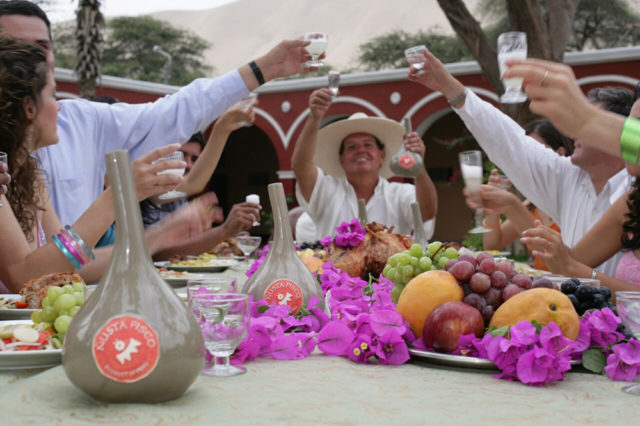 There’s a lot to celebrate at Macchu Pisco, where founder Melanie Asher is working to restore pisco as the liquid ambassador of Peru.
There’s a lot to celebrate at Macchu Pisco, where founder Melanie Asher is working to restore pisco as the liquid ambassador of Peru.
Macchu Pisco
As the only female producer of pisco in Peru, master distiller Melanie Asher came armed with business acumen and dedication to her home country. “When I was in business school I created a business plan to create a global pisco brand, and all my professors said, ‘Why don’t you create a vodka? There’s no volume in pisco.’ But I really wanted to do something unique that would contribute to my home country.” From the onset, Macchu Pisco has worked with women-owned farming co-ops in Ica. Her father was the company’s initial investor, her sister Lizzie joined up as president, and their mother is Macchu Pisco’s biggest promoter. Melanie’s grandmother, who turned 100 this year and still samples every batch of La Diablada before it’s bottled, once sold pisco at a corner store in Lima. “She taught me how to taste piscos and really refined my palate. My piscos are approachable, floral and feminine, and that’s because I work so closely with her.”
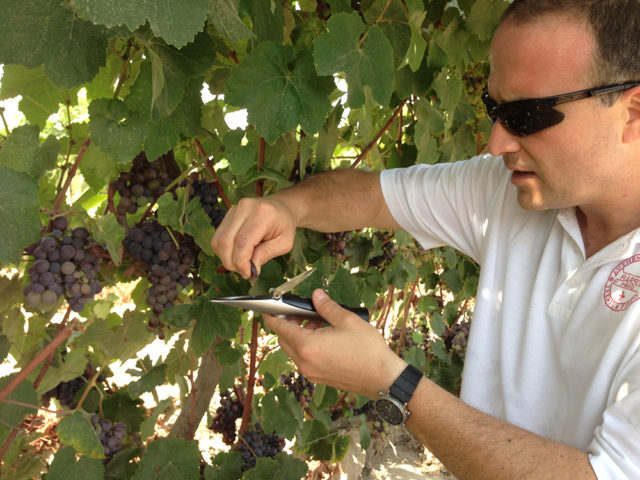 BarSol’s Diego Loret de Mola attentively measures the sugar brix of his vineyard’s grapes. Photo courtesy of Diego Loret de Mola.
BarSol’s Diego Loret de Mola attentively measures the sugar brix of his vineyard’s grapes. Photo courtesy of Diego Loret de Mola.
BarSol
BarSol’s distillery, Bodega San Isidro, dates back to the 1800s. When Diego Loret de Mola, a Peruvian native who spent a career in the U.S. as a financial trader, purchased the downtrodden facility, he uncovered and rebuilt two copper pot stills, which—along with modern destemmers and presses—are used to create BarSol’s seven varieties of pisco, plus a fortified wine called Perfecto Amor. Before he started making pisco, Diego embarked on a pisco pilgrimage. “I was fascinated by the rich history and I made it my personal commitment to tell the world about it,” he says. “I don’t sell pisco, I sell Peru through a glass.”
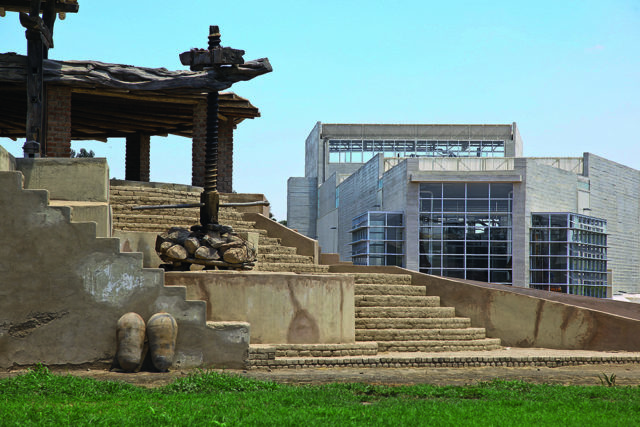 Porton’s distilleries highlight Peru’s past glory and future potential as a pisco purveyor to the world. Photo courtesy of Porton.
Porton’s distilleries highlight Peru’s past glory and future potential as a pisco purveyor to the world. Photo courtesy of Porton.
Porton
Porton entered the scene in 2009 with a splash: Owners Bill and Brent Kallop, a father-son oilman duo from Houston, purchased and began restoring Ica’s oldest distillery, broke ground on a new facility beside it, bought vineyards, and hired Peruvian pisco champion and television personality Johnny Schuler to be their master distiller. Previously, the Kallops spent a combined 35 years in Peru while running an oil company there. And so began their love of pisco. “It’s a pure expression of grapes, and the standards for making it are very high,” says Brent. “Maintaining authenticity is very important to us. Our historic distillery, La Caravedo, still functions as it did in 1684. It’s completely gravity-fed—there are no pumps and hoses—and so is our new distillery.”
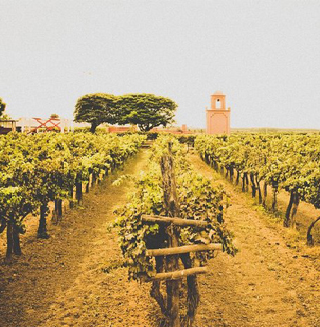 Duggan McDonnell, owner of Encanto Pisco, believes pisco has mystical qualities, which is easy to believe when looking at the vineyard. Photo courtesy of Encanto Pisco.
Duggan McDonnell, owner of Encanto Pisco, believes pisco has mystical qualities, which is easy to believe when looking at the vineyard. Photo courtesy of Encanto Pisco.
Encanto
If there is one person at the center of pisco’s resurgence in San Francisco, it’s bartender Duggan McDonnell, owner of Cantina and creator of Encanto Pisco. His fascination with the spirit began when he learned of pisco punch’s former prominence. He was frustrated with the quality of piscos available in the U.S. when he tried to recreate it—Duncan Nicol took the recipe to his grave in 1926. Nonetheless, he opened Cantina in 2007 with a San Francisco–centric cocktail program that largely centered on pisco. One day a pisco distiller named Carlos Romero walked in. “I actually had a bottle of his pisco behind my bar, and it was the one that I most enjoyed,” Duggan says. The two became friends, and soon, business partners (Carlos is now Encanto’s master distiller). In 2009 on a trip to Peru, Duggan had an a-ha moment. “The pisco there was stunning,” he says. “I thought, This is the stuff that was coming up the old Barbary Coast in the 1800s. This is the stuff people fell in love with.” Encanto uses a solera system, which means a little distillate is left behind every year to be blended with the next year’s run. “When you find the great stuff, it’s rich, round, and robust. It can be really strong, or light, lovely and aromatic. There are infinite possibilities of enjoyment,” says Duggan. “That to me is the magic. When you land upon a bottle that has all those qualities in it, you want to do everything with it—shoot it, sip it, shake it, stir it—because it has all these mystical qualities to it. And as a barman, that’s exactly what I want.”



